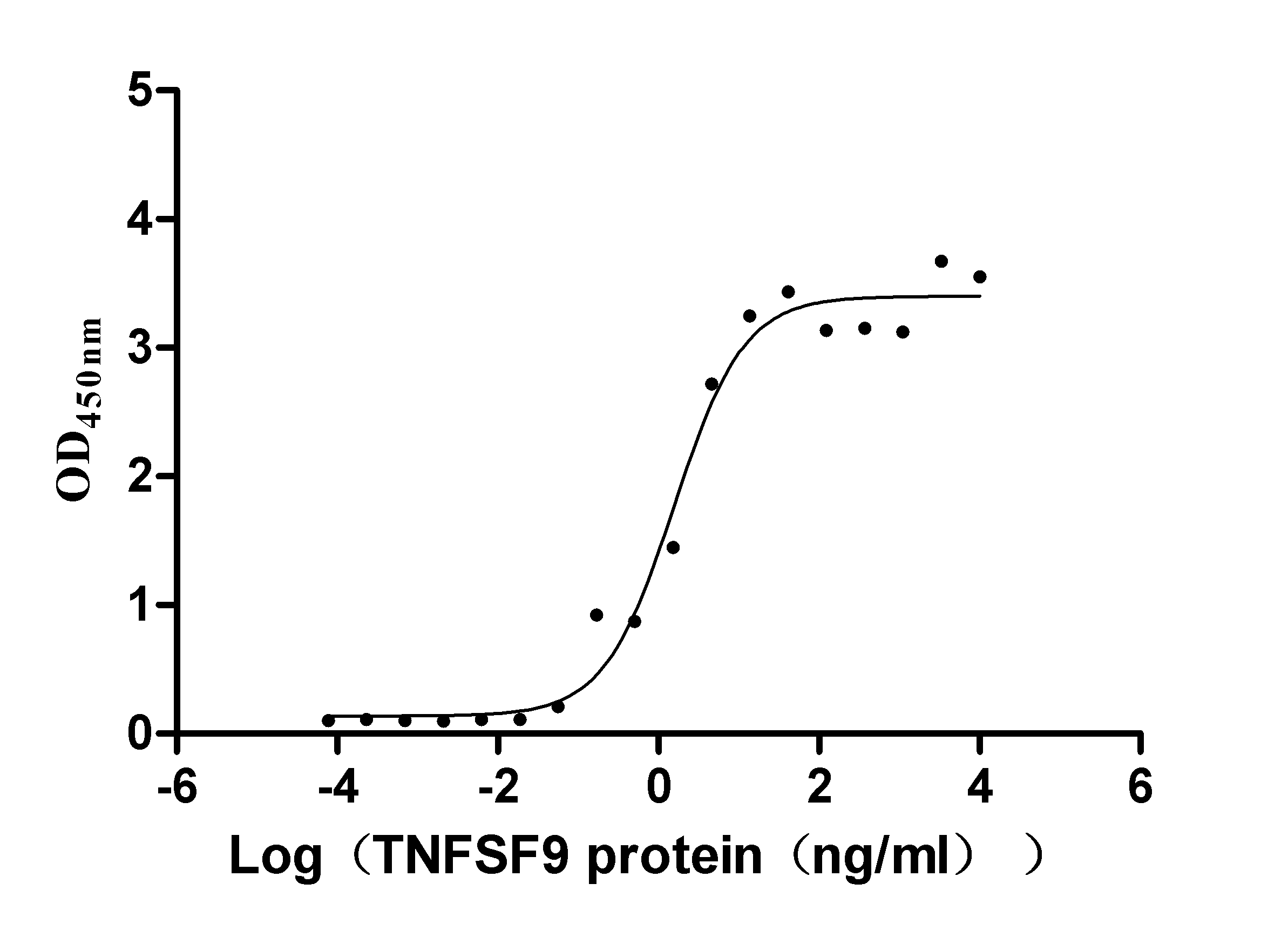Recombinant Burkholderia pseudomallei 30S ribosomal protein S10 (rpsJ)
-
中文名称:假马利伯克霍尔德氏菌rpsJ重组蛋白
-
货号:CSB-YP388106BPT
-
规格:
-
来源:Yeast
-
其他:
-
中文名称:假马利伯克霍尔德氏菌rpsJ重组蛋白
-
货号:CSB-EP388106BPT
-
规格:
-
来源:E.coli
-
其他:
-
中文名称:假马利伯克霍尔德氏菌rpsJ重组蛋白
-
货号:CSB-EP388106BPT-B
-
规格:
-
来源:E.coli
-
共轭:Avi-tag Biotinylated
E. coli biotin ligase (BirA) is highly specific in covalently attaching biotin to the 15 amino acid AviTag peptide. This recombinant protein was biotinylated in vivo by AviTag-BirA technology, which method is BriA catalyzes amide linkage between the biotin and the specific lysine of the AviTag.
-
其他:
-
中文名称:假马利伯克霍尔德氏菌rpsJ重组蛋白
-
货号:CSB-BP388106BPT
-
规格:
-
来源:Baculovirus
-
其他:
-
中文名称:假马利伯克霍尔德氏菌rpsJ重组蛋白
-
货号:CSB-MP388106BPT
-
规格:
-
来源:Mammalian cell
-
其他:
产品详情
-
纯度:>85% (SDS-PAGE)
-
基因名:rpsJ
-
Uniprot No.:
-
别名:rpsJ; BURPS1106A_3805; 30S ribosomal protein S10
-
种属:Burkholderia pseudomallei (strain 1106a)
-
蛋白长度:full length protein
-
表达区域:1-103
-
氨基酸序列MQQQKIRIRL KAFDYRLIDQ SAAEIVDTAK RTGAIVRGPV PLPTRIQRFD ILRSPHVNKT SRDQLEIRTH QRLMDIVDPT DKTVDALMKL DLPAGVDVEI KLQ
-
蛋白标签:Tag type will be determined during the manufacturing process.
The tag type will be determined during production process. If you have specified tag type, please tell us and we will develop the specified tag preferentially. -
产品提供形式:Lyophilized powder
Note: We will preferentially ship the format that we have in stock, however, if you have any special requirement for the format, please remark your requirement when placing the order, we will prepare according to your demand. -
复溶:We recommend that this vial be briefly centrifuged prior to opening to bring the contents to the bottom. Please reconstitute protein in deionized sterile water to a concentration of 0.1-1.0 mg/mL.We recommend to add 5-50% of glycerol (final concentration) and aliquot for long-term storage at -20℃/-80℃. Our default final concentration of glycerol is 50%. Customers could use it as reference.
-
储存条件:Store at -20°C/-80°C upon receipt, aliquoting is necessary for mutiple use. Avoid repeated freeze-thaw cycles.
-
保质期:The shelf life is related to many factors, storage state, buffer ingredients, storage temperature and the stability of the protein itself.
Generally, the shelf life of liquid form is 6 months at -20°C/-80°C. The shelf life of lyophilized form is 12 months at -20°C/-80°C. -
货期:Delivery time may differ from different purchasing way or location, please kindly consult your local distributors for specific delivery time.Note: All of our proteins are default shipped with normal blue ice packs, if you request to ship with dry ice, please communicate with us in advance and extra fees will be charged.
-
注意事项:Repeated freezing and thawing is not recommended. Store working aliquots at 4°C for up to one week.
-
Datasheet :Please contact us to get it.
靶点详情
-
功能:Involved in the binding of tRNA to the ribosomes.
-
蛋白家族:Universal ribosomal protein uS10 family
-
数据库链接:
KEGG: bpl:BURPS1106A_3805
Most popular with customers
-
Recombinant Human Tumor necrosis factor receptor superfamily member 9 (TNFRSF9), partial (Active)
Express system: Mammalian cell
Species: Homo sapiens (Human)
-
Recombinant Human Complement component C1q receptor (CD93), partial (Active)
Express system: Mammalian cell
Species: Homo sapiens (Human)
-
Recombinant Human V-set and immunoglobulin domain-containing protein 4 (VSIG4), partial (Active)
Express system: Mammalian cell
Species: Homo sapiens (Human)
-
Recombinant Human Desmoglein-3 (DSG3), partial (Active)
Express system: Baculovirus
Species: Homo sapiens (Human)
-
Recombinant Human Tumor-associated calcium signal transducer 2 (TACSTD2), partial (Active)
Express system: Mammalian cell
Species: Homo sapiens (Human)
-
Recombinant Human Cadherin-17 (CDH17), partial (Active)
Express system: Mammalian cell
Species: Homo sapiens (Human)
-
Recombinant Mouse CUB domain-containing protein 1 (Cdcp1), partial (Active)
Express system: Mammalian cell
Species: Mus musculus (Mouse)
-
Recombinant Human Cytotoxic and regulatory T-cell molecule (CRTAM), partial (Active)
Express system: Mammalian cell
Species: Homo sapiens (Human)



















